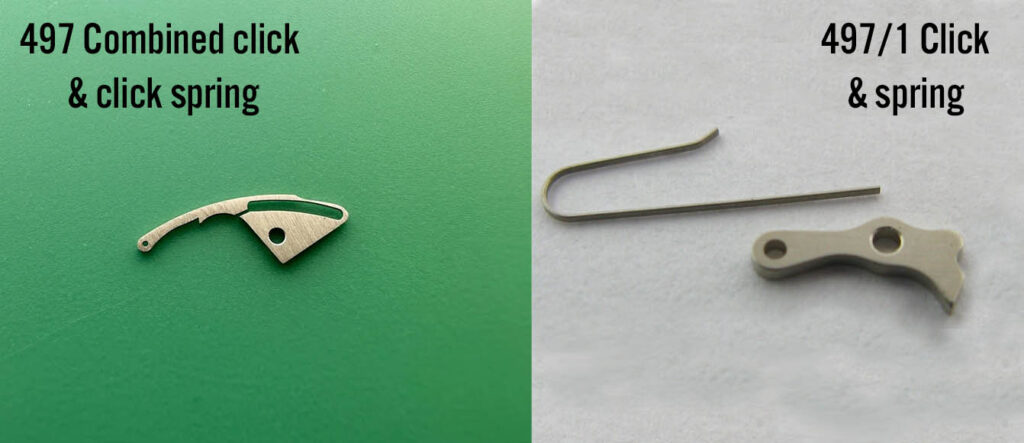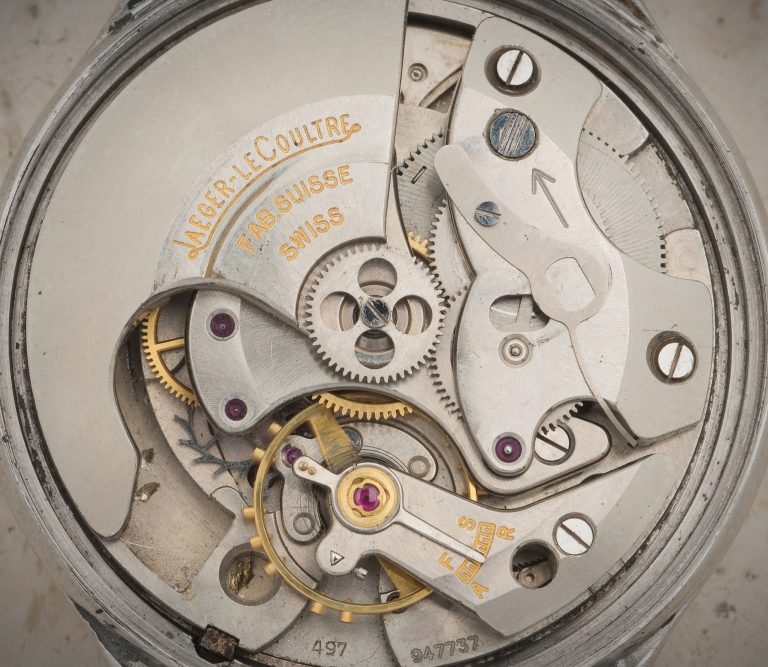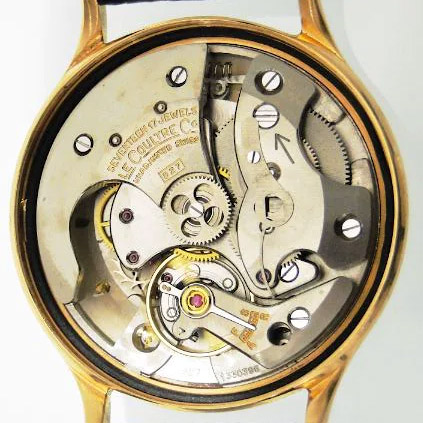Futurematic E501 - Movements 497, 497/1, and 827
The E501 containing the 497 movement was the first model Futurematic that JLC produced. Production started in 1951[1], although I can’t find any record of watches being sold/dated before 1952. It is entirely possible that JLC took a year to get the watch into viable production given the complexity of the movement for the time.
The E501 was marketed as the first “100% automatic” watch (you can see these advertisements in the Old Ads section), although there doesn’t appear to be any truth to this. There were wrist watches made before the Futurematic that were self-winding, dating back to at least 1922[2], and even watches made without crowns in 1923. These early watches which used a bumper movement were even made in relatively similar volume to the Futurematic.
Data:
- 13 3/4 ligne (31.3 mm)
- Height 6.3 mm
- Balance 2-spoke Glucydur with adjustment screws
- Balance Spring Nivarox spiral
- KIF shock absorbers
- 17 jewels
- 18,000 A/h
- Power reserve ~30 hours


Calibre 497 and 497/1
Nearly all E501s made contained the 497 or 497/1 movement. These were produced from 1951 to 1957.
This model had several complications and features that made it a technological marvel for the time, and were very unique to the watch:
- A 20% larger balance due to the extra space from no crown. This was claimed to give a 50% increase in accuracy over similar watches of the time.
- A hook would latch the rotor when the watch was fully wound, preventing over-winding the mainspring. This was before the invention of the slipping/clutched mainspring.
- Hacking seconds.
- Due to a small prewind in the mainspring, the watch will start and run well after a few swings of the bumper when the power reserve is depleted.
- The nine o’clock dial shows the power reserve of the watch.
- Second hand at three o’clock.


Calibre 827
The 827 movement was very similar to the 497, including only small updates:
- Flange shock springs
- Modified bumper stop mechanism and stop pawls
Produced from 1953 to 1958, there were only around 1,000 of these made, making them extremely rare.

